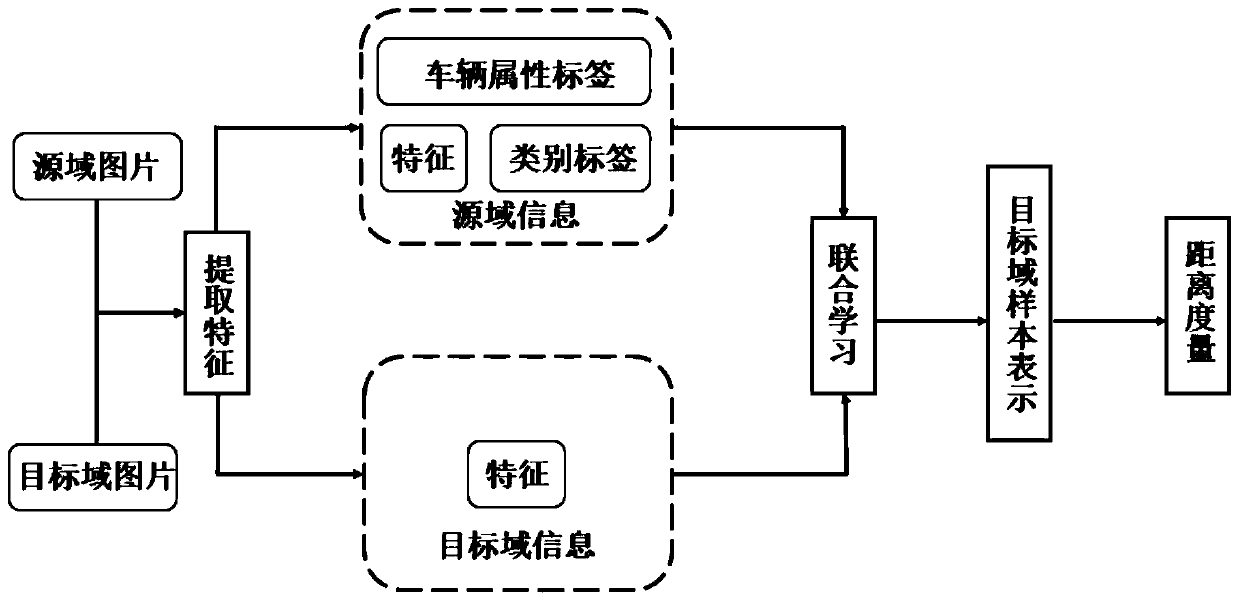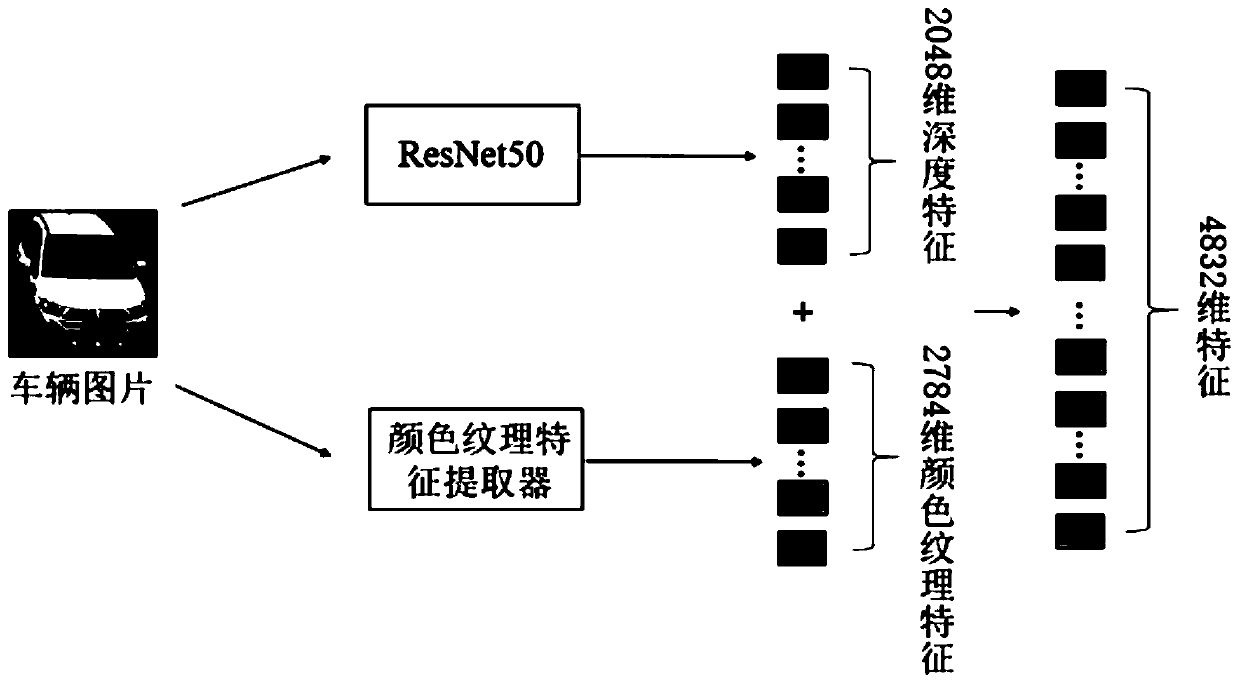Vehicle re-identification method based on cross-domain migration enhancement representation
A re-identification and vehicle technology, applied in the field of intelligent transportation, can solve problems such as noise pollution, poor effect, and small number of target database samples, and achieve the effect of improving accuracy
- Summary
- Abstract
- Description
- Claims
- Application Information
AI Technical Summary
Problems solved by technology
Method used
Image
Examples
Embodiment 1
[0026] An embodiment of the present invention provides a vehicle re-identification method based on cross-domain migration enhanced representation, see figure 1 , the method includes the following steps:
[0027] 101: Use D for the user-defined vehicle attribute dictionary set u representation, and its mapping in the source domain with Indicates that the discriminative feature dictionary set shared by the source domain and the target domain is represented by D ds representation, and its mapping in the source domain with Indicates that the background error in the source domain is represented by E S Indicates that the feature matrix of the vehicle image in the source domain can be represented by D u , D. ds , E. S Represent; the dictionary set D u Mapping in the target domain with Indicates that the dictionary set D ds Mapping in the target domain with Indicates that the discriminative feature dictionary set unique to the target domain is represented by D du re...
Embodiment 2
[0037] The scheme in embodiment 1 is further introduced below in conjunction with calculation formula and examples, see the following description for details:
[0038] see figure 2 , using ResNet50 (residual network) in the source and target domains to remove the last fully connected layer to extract 2048-dimensional depth features, 2784-dimensional color and texture descriptors use the l2 norm to normalize each type of feature, and then they are Connect to form a 4832-dimensional feature representation, and finally, normalize the 4832-dimensional features to obtain the source domain feature matrix X S , the target domain feature matrix X T .
[0039] Among them, the color and texture descriptor consists of 8 color channels RGB, HSV and YC b C r (V and Y only select one channel to use) and 19 texture channels Gabor and Schmid.
[0040] Binary conversion is performed on the attribute label of the source domain. For example, the color attribute of a red vehicle is marked a...
PUM
 Login to View More
Login to View More Abstract
Description
Claims
Application Information
 Login to View More
Login to View More - R&D
- Intellectual Property
- Life Sciences
- Materials
- Tech Scout
- Unparalleled Data Quality
- Higher Quality Content
- 60% Fewer Hallucinations
Browse by: Latest US Patents, China's latest patents, Technical Efficacy Thesaurus, Application Domain, Technology Topic, Popular Technical Reports.
© 2025 PatSnap. All rights reserved.Legal|Privacy policy|Modern Slavery Act Transparency Statement|Sitemap|About US| Contact US: help@patsnap.com



